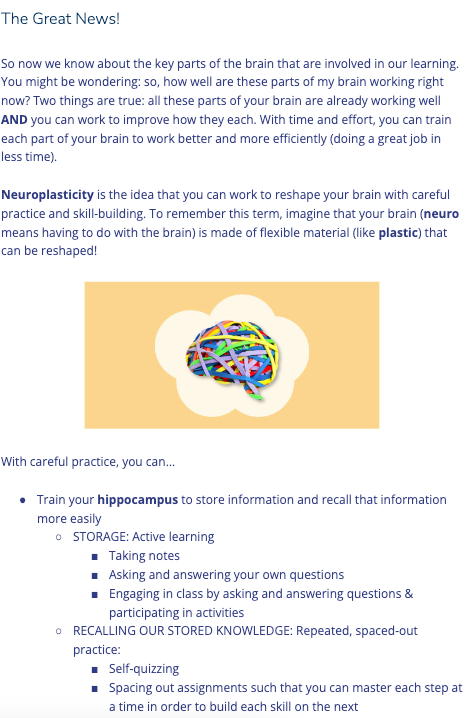I officially launched Isabel O’Connor Writing on May 29th, just about two months ago (!), so I thought it was time to share a bit about what my students and I have actually been doing!
To provide a sense of the range of individualized courses I’ve designed and taught so far, I will share three case studies:
A “thesis bootcamp” for a high-school student
A literary essay course for a middle-school student
A combined executive functioning & academic writing course for a middle-school student
I will refrain from sharing student writing to preserve their privacy; instead, I will offer a window into my course-design process along with a general summary of the topics my students have been writing about.
(That being said, I wish I could share these students’ fantastic writing—I know you’d be as impressed as I am 🤩.)
Case Study 1: A “thesis bootcamp” for a high-school student
Like several summer students, this high-schooler started their course before camp and will finish afterward. As a result, we began with two stand-alone lessons, one of which was a “thesis bootcamp.”
For each student’s individual course, I created a shared Google doc in which the student completes their work. Below, you can see how I set up a lesson document for the “thesis bootcamp”—each agenda item links to the associated exercises that the student worked through during the session:
One of the terrific features of 1:1 instruction is that I can adjust the agenda continuously throughout the lesson to respond to the student’s individual pace.
In this case, the student’s original observations were so perceptive that we could jump from “Step 2” to “Step 5,” allowing us more time to iteratively revise their thesis.
Now, you might be surprised that we spent most of an hour working on “just” a thesis —and you wouldn’t be alone. Every student is surprised to see how long we iterate on a thesis before moving to an outline—and that I often suggest they KEEP iterating on the thesis as they add detail to their outline. Once they get to writing the essay, they understand the “method to my madness” when they realize they’ve achieved a new level of complexity in their analysis.
In this case, the rising 10th grader started with their observations about characteristics of the ancient Greek and Roman gods, as revealed in mythology. In particular, they reflected on the fact that these gods’ personalities and actions mirror those of humans. At this point, I suggested they bring in their prior knowledge about monotheistic religions in order to generate comparison. Ultimately, their thesis articulated an argument about how these different conceptions of the divine shape the experience of adherents.
Pretty cool stuff! 😎
Case Study 2: A literary essay course for a middle-schooler
This second student also undertook part of their course before camp and will finish in August. In this case, we spent six sessions working on a literary essay based on their summer reading choice, Little Women.
In 1:1 academic writing courses, I can build a course around a student’s existing school work in order to BOTH assist them in finding success in a particular course AND teach them an independent and transferable set of skills.
In our early sessions, the student generated questions, observations, and preliminary analyses based on independent reading, and we expanded their reading and writing skills toolkit.
As all teachers know, it is essential to continuously access a student’s prior knowledge. In this case, the student’s prior knowledge of reading and writing skills was—kudos to their teachers!—substantial. If I’d been teaching these lessons in a classroom, this student would have had to re-learn skills that they had already mastered but other students had not; however, in our 1:1 lessons, we were able to move on to the next level based on their strong foundation.
Thus, another advantage of 1:1 instruction is that, during any lesson, I can instantly adjust the plan to meet a student exactly where they are.
Eventually, we proceeded deliberately through my signature essay-development process, the nuts and bolts of which are:
The process must be iterative.
The process must also be systematic, including the core four steps: braindump, outline, draft, and revise.
As part of this process, the student chooses from a selection of outline templates, and I then adapt their choice to their level and assignment.
One template is my “tried and true” box organizer, which this student ended up choosing. Other options include a “mind map” in Google Slides and a traditional Roman-numeral list (yes, the one most adults remember from high school 😉).
Here is the basic box organizer template from which I build students’ individual outline tools:
As the student read Part I of Little Women, they became fascinated by the relationship between Jo and Laurie. They selected several quotations and began to tease out the fact that the characters’ words and actions appear to shift from friendly to romantic in the early chapters.
At that point, I suggested that the student investigate all of the other cross-gender relationships in the book in order to make comparisons. They found that there are no other examples of cross-gender platonic friendships in Little Women and decided to develop an argument about what the book reveals through highlighting Jo and Laurie’s unusual and shifting relationship. The student plans to continue with this theme as they read and analyze Part II of Little Women after camp.
For those of you who have read the novel, you know that this student will have some fascinating material to analyze after camp! 🔎
Case Study 3: A combined executive functioning & academic writing course for a middle-school student
As I developed a course for this third student, I had an advantage: I had already taught this student in my classroom.
As such, I knew that their ideal course would include BOTH writing instruction and executive functioning skill-building. Thus, my course design began with two sessions about general skills for academic success, followed by two essay-development modules in which we would continuously review the core academic skills.
Another advantage of 1:1 instruction is that I can leverage my decade of classroom experience to create lessons that teach a wide range of academic skills.
Below is an excerpt from the material that I created for this course. As they encountered each topic, the student first reflected on their prior knowledge, then read and responded to the provided material, and finally developed a plan to integrate what they learned into their academic approach. I am happy to report that, as of session four, the student is already practicing healthier habits to support learning, such as following a firm sleep/wake schedule and completing the homework I assign right away. They also said, “I am surprised at how much I’m learning in tutoring!” (High praise from a 13-year-old in July 😋😎….)
Excerpt from my original resource: “How do our brains learn?”
As we moved into writing instruction, I asked the student to pick ANY topic of interest to them, provided we could find “facts” to use as evidence. They decided to focus on cat training (at which point they picked up their cat to introduce us 😻).
I then provided a few reliable resources on cat training, and the student used these to generate their question: If you would like your cat to sit on demand, what is the best way to train them, and why?
And now things get fun: we decided that the student would spend the next week between our sessions BOTH reading more about cat training AND actually attempting to use several strategies to train their cat to sit!
When we get down to writing, the student will integrate their research and experimentation to form the basis of their argument. I’m really excited to see what they come up with!
AND: If you are a cat owner out there…please don’t burst this young person’s bubble and tell us that teaching a cat to sit is impossible 😉😹…
Interested in learning more about my custom course design? Fill out this inquiry form or email me at ioconnorwriting@gmail.com. I look forward to hearing from you!








